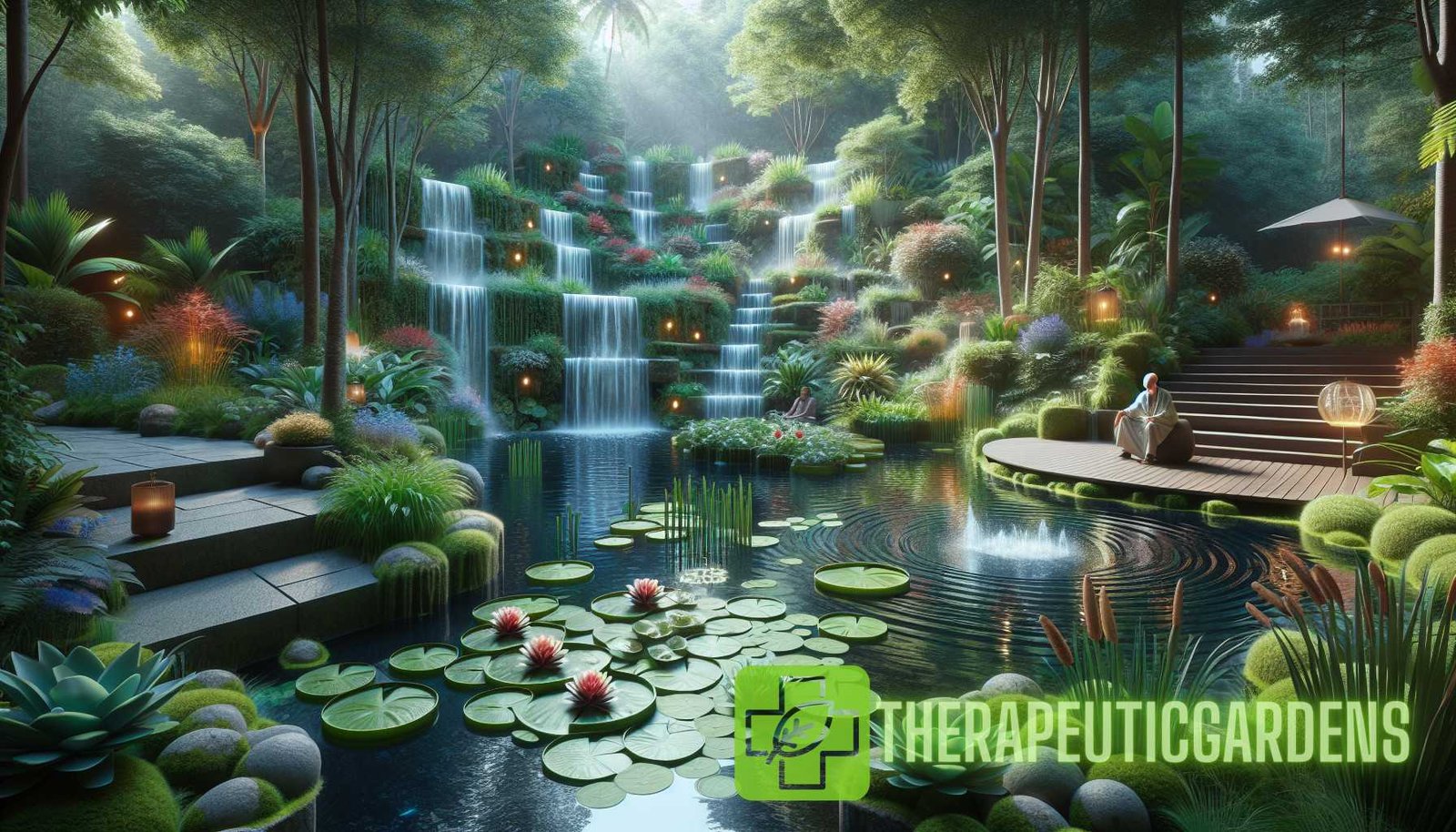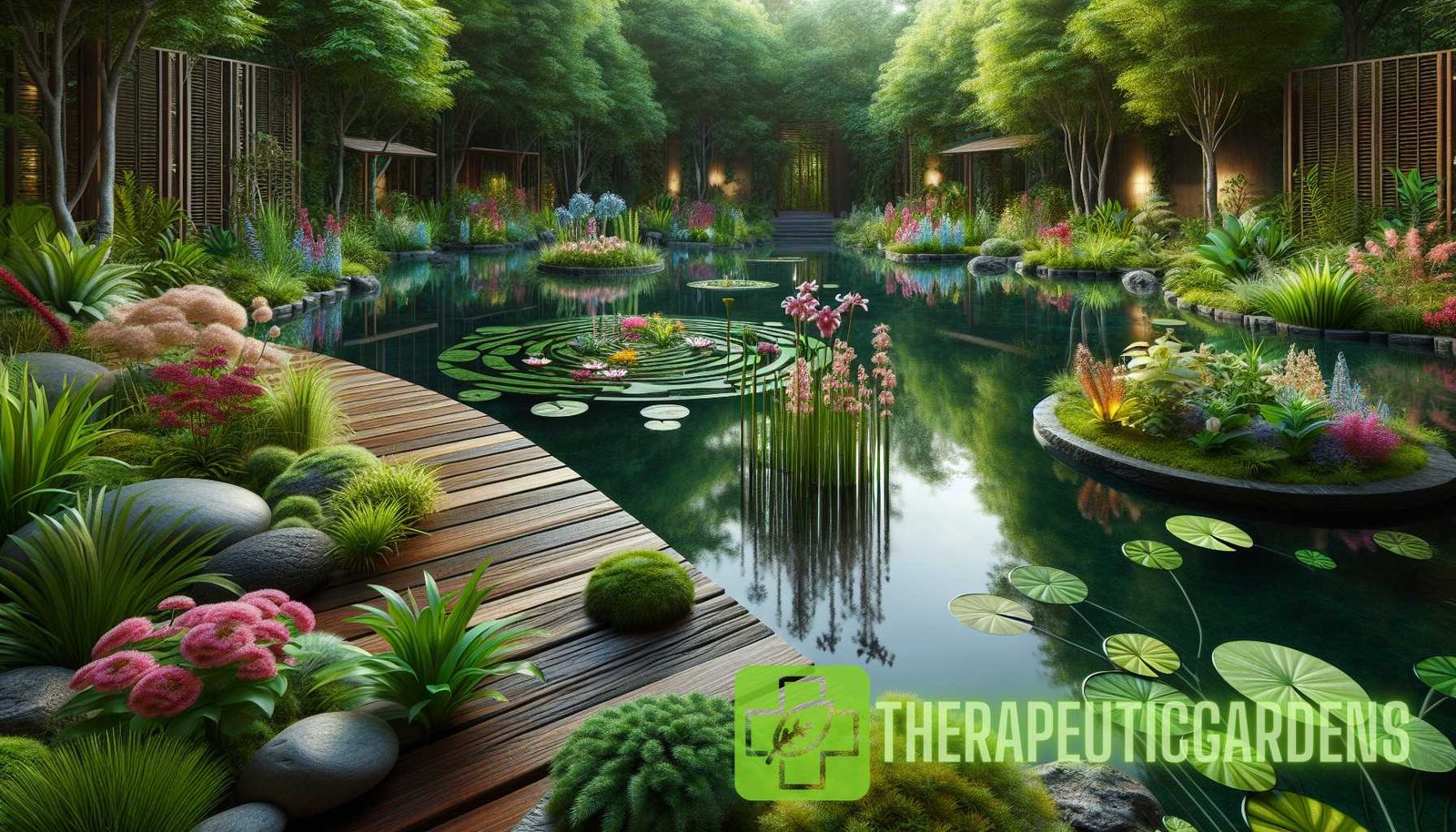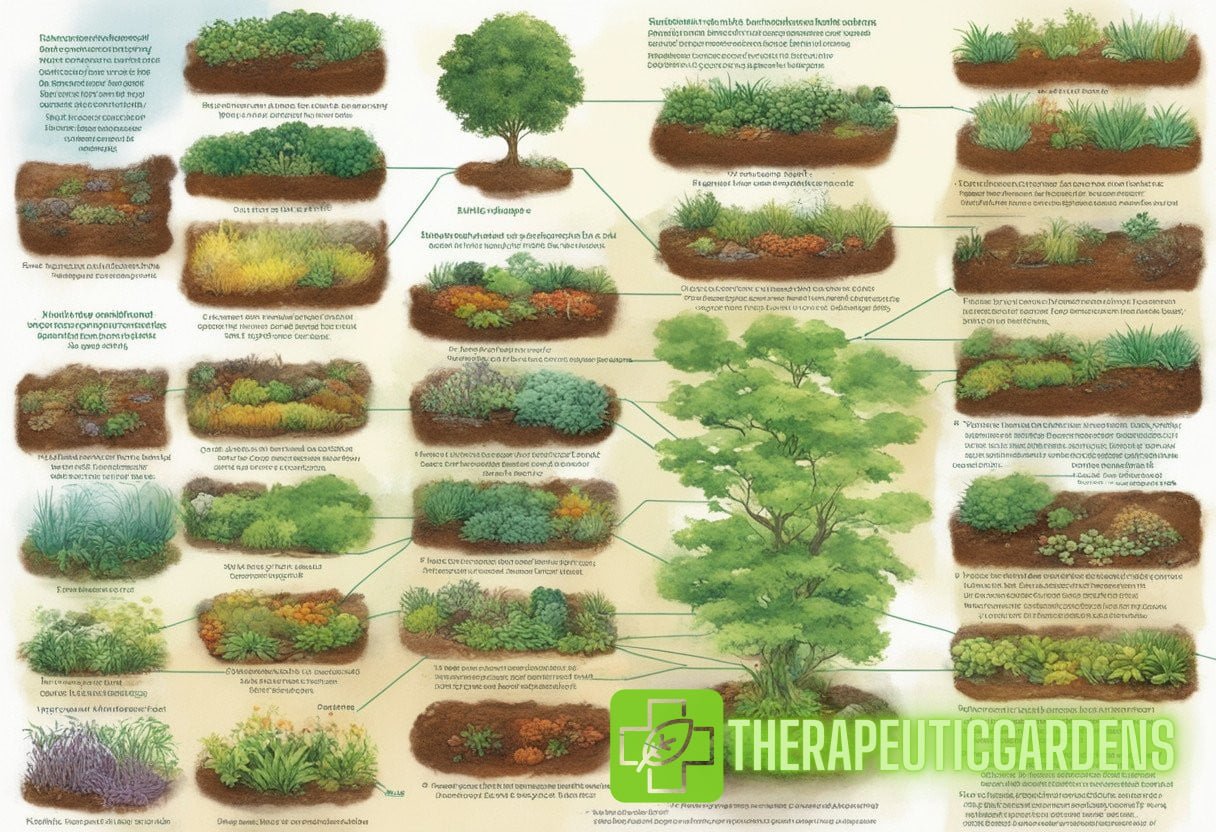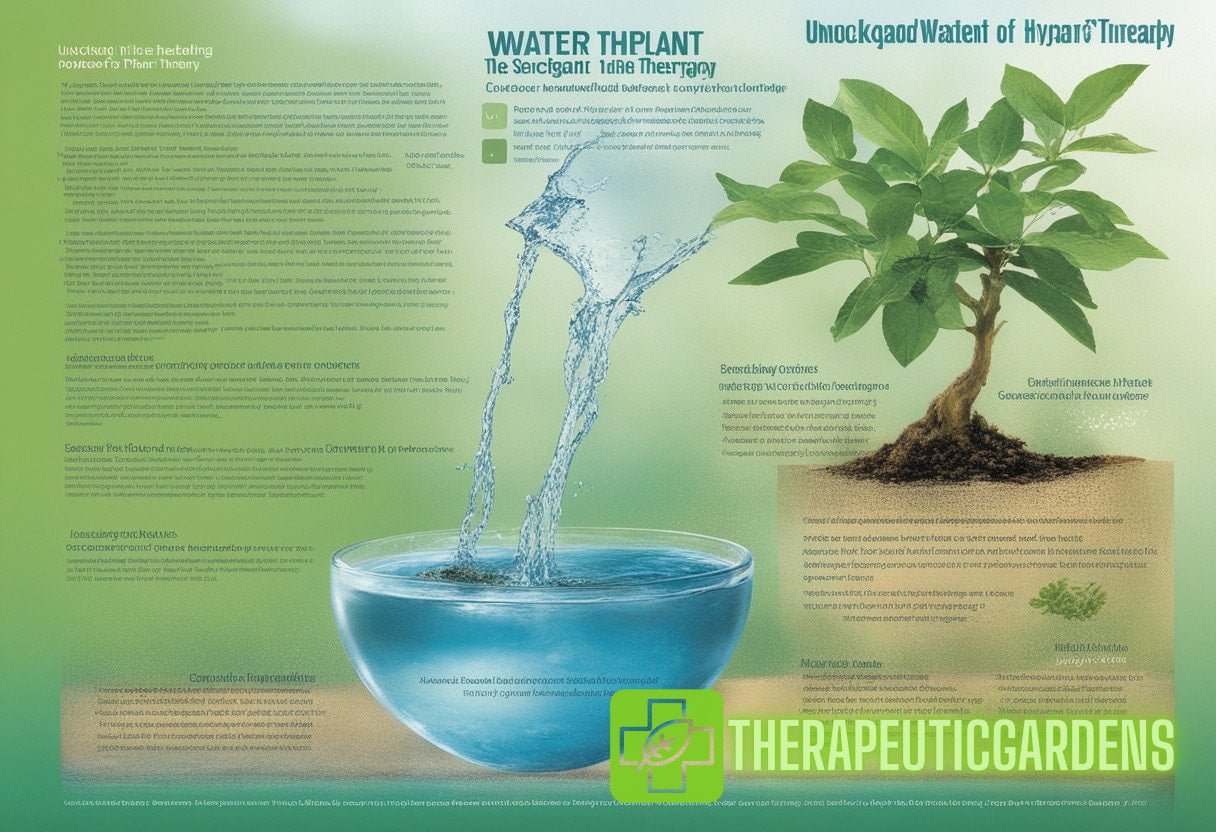Introduction
Therapeutic gardens have long been recognized for their ability to enhance well-being and promote healing, offering a respite from the stress and pressures of daily life. From a simple walk in a garden setting to engaging in horticultural activities, the benefits of spending time in nature are undeniable. While traditional therapeutic gardens often focus on land-based plants, there is an emerging field that explores the healing potential of aquatic plants and elements in therapeutic gardens. This article will delve into the untapped depths of aquatic therapy and unveil the hidden aquatic remedies found in therapeutic gardens.
The Healing Power of Therapeutic Gardens
Therapeutic gardens have a storied history dating back to ancient times. From the Hanging Gardens of Babylon to the monastic gardens of medieval Europe, the idea of using natural surroundings for healing purposes has been a constant thread throughout civilization. In recent years, scientific research has confirmed what our ancestors instinctively knew – spending time in nature has a profound impact on our physical, mental, and emotional well-being.
Therapeutic gardens are designed with specific intentions to promote healing, relaxation, and well-being. They often incorporate features such as winding paths, seating areas, and sensory elements like fragrant flowers and herbs. These gardens provide individuals with the opportunity to connect with nature, reducing stress, promoting physical exercise, and enhancing overall quality of life.
The Rise of Aquatic Therapy
While traditional therapeutic gardens have focused primarily on land-based plants, there is a growing recognition of the healing potential found in aquatic environments. Aquatic therapy, also known as hydrotherapy, involves using water and water-based plants for physical and mental healing. Whether it’s through immersion in a natural body of water or incorporating aquatic plants in therapeutic gardens, this emerging field has shown promising results in promoting well-being.
Aquatic therapy has been practiced for centuries in various cultures around the world. Ancient civilizations in Egypt, Greece, and Rome recognized the healing properties of water and developed elaborate bathing rituals and communal baths. Today, aquatic therapy is used in a wide range of settings, including rehabilitation centers, spas, and therapeutic gardens.
The Therapeutic Potential of Water-Loving Plants
Water-loving plants, also known as hydrophytes, are a diverse group of plants that thrive in aquatic environments. These plants have unique adaptations that allow them to grow and flourish in waterlogged conditions. Their ability to absorb nutrients directly from the water and filter out impurities makes them well-suited for use in therapeutic gardens.
By integrating water-loving plants into therapeutic garden designs, individuals can experience the healing benefits of aquatic therapy. These plants not only enhance the aesthetic appeal of the garden but also provide a myriad of physical, mental, and emotional benefits. Some of the therapeutic potential of water-loving plants include:
- Stress reduction: The soothing sounds and visuals of water can promote relaxation and reduce stress levels.
- Improved air quality: Water-loving plants act as natural air purifiers, removing toxins and pollutants from the surrounding environment.
- Biodiversity support: Aquatic plants provide habitat and food sources for a variety of wildlife, creating a vibrant ecosystem within the garden.
- Physical rehabilitation: Aquatic therapy can aid in physical rehabilitation by providing a low-impact environment for exercises and movements.
- Mental well-being: Being surrounded by water and aquatic plants can have a calming effect on the mind, reducing anxiety and promoting mental clarity.
Unlocking the Potential of Aquatic Remedies

Aquatic therapy offers a wide range of remedies that can be harnessed in therapeutic gardens. These remedies include both physical and mental benefits and can be tailored to meet the specific needs of individuals. By integrating water-loving plants and aquatic elements into therapeutic garden designs, the healing potential of aquatic therapy can be fully realized.
One example of an aquatic remedy is the use of water-loving plants in the treatment of skin conditions such as eczema. Certain aquatic plants have been found to have anti-inflammatory and soothing properties when applied topically. By incorporating these plants into therapeutic gardens, individuals with skin conditions can benefit from the calming effects of aquatic therapy.
Another aquatic remedy lies in the use of water features such as fountains and ponds. The sound of running water has been shown to promote relaxation and reduce stress levels. By incorporating water features into therapeutic gardens, individuals can experience the soothing effects of water and enhance their overall sense of well-being.
The Role of Therapeutic Gardens in Aquatic Therapy
Therapeutic gardens play a crucial role in the practice of aquatic therapy. By creating an environment that integrates land-based and water-based plants, these gardens provide individuals with a holistic healing experience. The careful design and selection of water-loving plants and aquatic elements contribute to the overall therapeutic benefits of the garden.
The design of therapeutic gardens should take into consideration accessibility, safety, and the specific needs of the individuals using the space. The inclusion of water features, seating areas, and sensory elements can further enhance the therapeutic experience. Additionally, the presence of water-loving plants provides a visually appealing and immersive experience that promotes relaxation and well-being.
The Benefits of Aquatic Therapy in Therapeutic Gardens
The benefits of aquatic therapy in therapeutic gardens are numerous and wide-ranging. Some of the key benefits include:
- Physical rehabilitation: Aquatic therapy provides a low-impact environment for individuals recovering from physical injuries or conditions. The buoyancy of water reduces stress on joints and muscles, making it an ideal medium for rehabilitation exercises.
- Improved mental health: Spending time in a therapeutic garden with water features and aquatic plants can have a positive impact on mental health. The calming effects of water promote relaxation, reduce anxiety, and improve overall mood.
- Stress reduction: The sound of running water and the presence of water-loving plants create a soothing environment that helps reduce stress levels. Individuals can find solace in these peaceful surroundings, taking a break from the demands of everyday life.
- Enhanced sensory experience: The sensory elements in therapeutic gardens, such as the fragrances of water-loving plants and the feel of water on the skin, provide a rich sensory experience that can stimulate the senses and promote well-being.
- Natural beauty: The presence of water-loving plants, ponds, and water features adds to the visual appeal of therapeutic gardens. These elements create a serene and aesthetically pleasing environment that uplifts the spirit.
Conclusion
Aquatic therapy is an exciting and emerging field within the realm of therapeutic gardens. By unveiling the hidden aquatic remedies found in these gardens, individuals can experience the healing power of water and water-loving plants. Whether it’s through physical rehabilitation, stress reduction, or improved mental health, aquatic therapy offers a wide range of benefits that can enhance overall well-being.
Therapeutic gardens that incorporate water-loving plants and aquatic elements provide individuals with a holistic and immersive healing experience. The soothing effects of water, the vibrant biodiversity, and the visual beauty of these gardens create an environment that promotes relaxation, reduces stress, and improves overall quality of life.
As the field of aquatic therapy continues to evolve, it is important to explore the untapped depths of this healing modality. By integrating water-loving plants and aquatic elements into therapeutic garden designs, we can unlock the hidden potential of aquatic therapy and provide individuals with a new dimension of healing and well-being.



